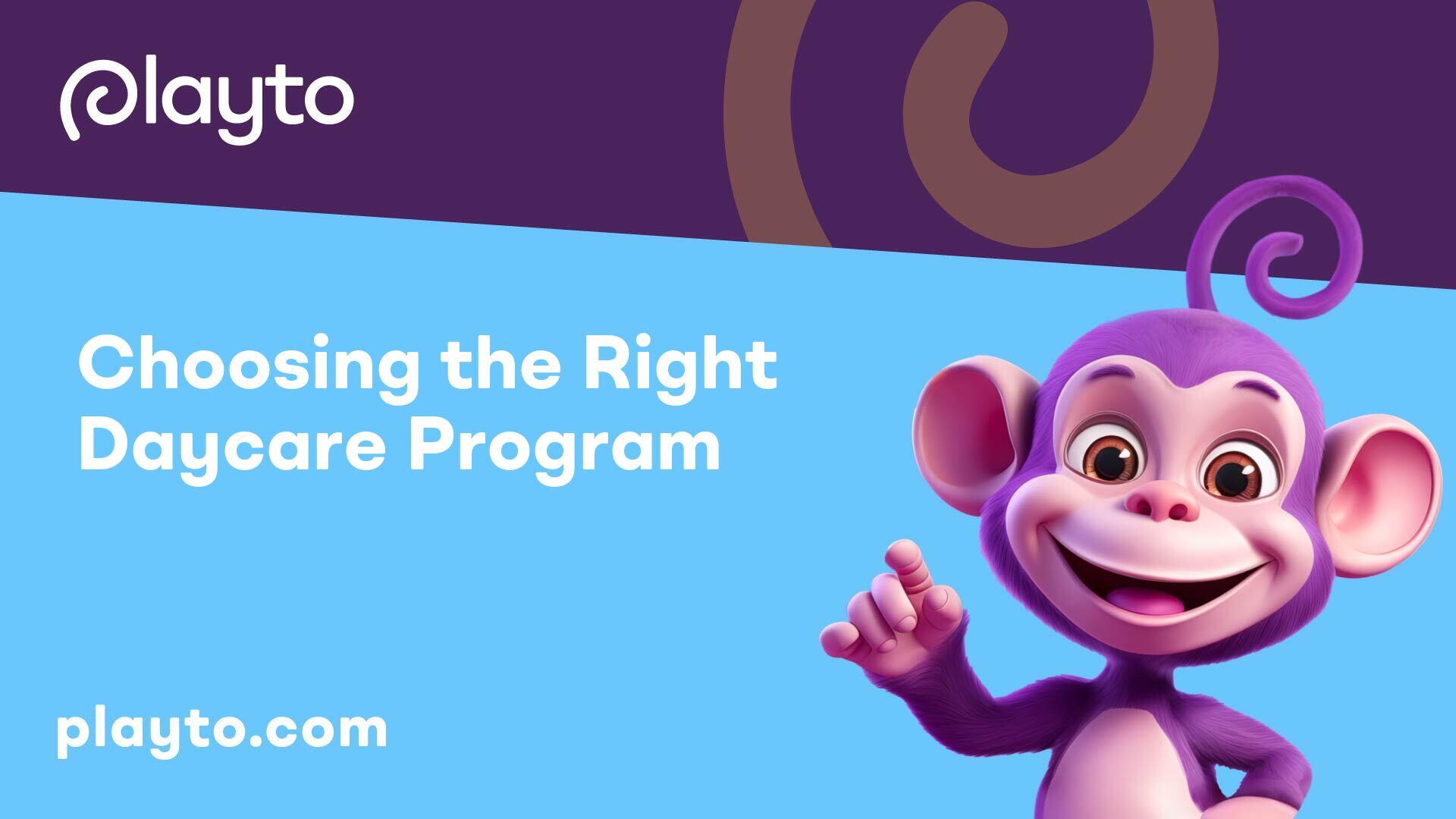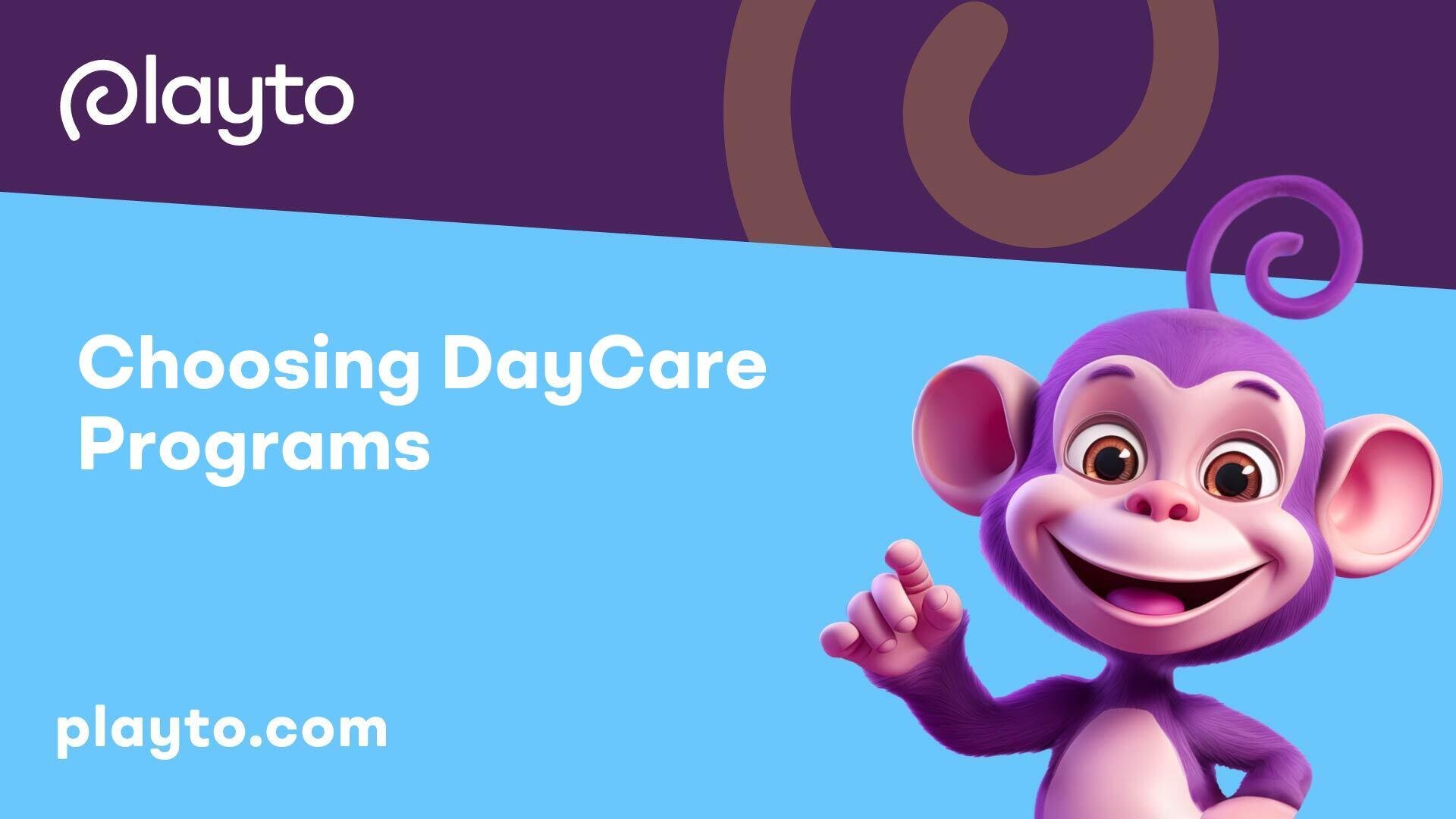
Choosing the Right Daycare Program
Before selecting a daycare program for your child, it's essential to delve into the fundamentals of quality care that promote optimal development and learning. Understanding the principles of Developmentally Appropriate Practice (DAP) is paramount in ensuring that your child receives the best possible care and support during their formative years.
Understanding Developmentally Appropriate Practice
Developmentally Appropriate Practice (DAP) is a philosophy that champions each child's optimal growth and learning through a play-based and strengths-based approach. Educators who adhere to DAP construct learning environments that cater to the diverse needs of children across all developmental domains. By recognizing and celebrating each child's unique assets and qualities, DAP fosters a supportive and nurturing environment for growth and learning [1].
Importance of Cultural, Linguistic, and Ability-Appropriate Practices
Incorporating cultural, linguistic, and ability-appropriate practices into daycare programs is vital for creating inclusive and effective learning environments. Culturally responsive practices acknowledge and respect the diverse backgrounds and experiences of children, nurturing their sense of identity and belonging. Linguistically appropriate practices ensure that children can communicate and express themselves in ways that are meaningful to them. Similarly, ability-appropriate practices cater to the unique needs and abilities of each child, supporting their individual growth and development [1].
When assessing daycare programs, it's crucial to inquire about how cultural, linguistic, and ability diversity is embraced and integrated into the curriculum and daily activities. By selecting a daycare that prioritizes these practices, you can ensure that your child receives personalized care that respects and celebrates their individuality.
To further enhance your understanding of crafting developmentally appropriate curricula that align with DAP principles and cater to the diverse needs of children, explore the core considerations emphasized by the National Association for the Education of Young Children (NAEYC) in our article on early childhood curriculum. Understanding these considerations will empower you to select a daycare program that aligns with your child's developmental needs and sets them on a path towards educational and social success.

Types of Daycare Programs
In the realm of daycare programs, there are various options available to cater to the diverse needs of families. Understanding the distinctions among these programs is essential when choosing daycare programs. Let's explore the five common types of daycare programs: family child care homes, child care centers, preschool programs, school-age programs, and family, friend, and neighbor care.
Family Child Care Homes
Family child care homes offer care for small groups of children in a residential building. Typically run by one or two caregivers, these settings may provide services during non-traditional hours to accommodate working parents. It is crucial for parents to verify whether the provider follows minimum health and safety requirements, ensuring a secure environment for children. Further details can be obtained through organizations like Child Care Aware.
Child Care Centers
Child care centers, on the other hand, enroll a larger number of children and often group them by age. Located in non-residential commercial buildings, these centers can operate as non-profit or for-profit entities. The licensure requirements for child care centers can vary, so it's advisable to verify this information with the provider or local authorities to guarantee compliance with safety standards. For further information, refer to Child Care Aware.
Preschool Programs
Preschool programs cater to children typically aged between 3 to 5 years old and are commonly offered by schools, faith-based organizations, non-profits, and child care centers. Parents should confirm that preschool providers adhere to necessary health and safety regulations and possess the required licenses to operate effectively. For more information, visit Child Care Aware.
School-Age Programs
School-age programs play a significant role in providing child care before and after school, during school holidays, and summer breaks. These programs are offered by various entities such as schools, YMCA, Boys and Girls Club, family child care providers, child care centers, parks and recreation departments, as well as community-based programs and churches. Parents are advised to verify the licensing status and participation in Quality Rating and Improvement Systems of these programs. More details can be found at Child Care Aware.
Family, Friend, and Neighbor Care
Family, friend, and neighbor care involves providing child care in the child's or caregiver's home by a relative, friend, neighbor, babysitter, or nanny. These providers are often exempt from certain regulations, so it's crucial to ascertain if they meet health, safety, and training standards. Parents should also confirm if they are required to be licensed to ensure a safe and nurturing environment for their children. For further insights, visit Child Care Aware.
Understanding the distinguishing features of each type of daycare program facilitates informed decision-making when selecting the most suitable daycare setting for the well-being and development of children.

Benefits of Quality Daycare
When it comes to choosing daycare programs, understanding the benefits of quality daycare can help parents make informed decisions for their children. Quality daycare not only provides a safe and nurturing environment but also offers numerous developmental advantages. In this section, we will explore the behavioral, academic, and social benefits that children can gain from attending quality daycare programs.
Behavioral Benefits
Studies have shown that children who attend quality daycare exhibit better behavior, even into grade school. Quality daycare environments focus on fostering positive behaviors, such as problem-solving, fostering independence, and friendships building among children. The structured routines and supportive interactions in daycare settings lay the foundation for social and behavioral skills that can benefit children well beyond their daycare years. By encouraging a sense of community and respect, daycare programs help children develop key social and emotional skills that are essential for future success.
Academic Advantages
Academic preschools within daycare programs play a significant role in preparing children for school readiness. Children enrolled in quality daycare programs are more likely to become strong readers and excel in math. Through structured curricula and engaging educational activities, daycare programs support cognitive development and school readiness. By providing a stimulating learning environment that focuses on language development, literacy, and mathematical concepts, daycare programs lay a solid academic foundation that can benefit children throughout their academic journey.
Social Development
One of the key benefits of quality daycare is the social development opportunities it offers. Interacting with peers in a daycare setting allows children to develop essential social skills such as friendship building, communication, and collaboration. These social interactions help children learn to navigate relationships, resolve conflicts, and express themselves effectively. By promoting a sense of community and inclusivity, daycare programs create a supportive environment where children can learn and grow together. The social skills developed in daycare settings lay a strong foundation for future social interactions and relationship building.
In conclusion, quality daycare programs play a vital role in promoting children's overall development. By providing a nurturing and stimulating environment that focuses on behavioral, academic, and social development, daycare programs set children on the path to success both in school and beyond. Parents can feel confident in the decision to enroll their children in quality daycare programs, knowing that they are investing in their children's future well-being and growth.
Selecting the Ideal Daycare Setting
When faced with the task of choosing a daycare setting, parents in New York need to consider various factors to ensure they select the best option for their child. In this section, we will explore in-home daycares, licensing requirements, and accreditation considerations to help parents make an informed decision.
In-Home Daycares
In-home daycares offer personalized care for small groups of children in a residential setting, typically with one or two caregivers. This setup is particularly beneficial for parents of infants as it allows for more individualized attention. Providers of in-home daycare may offer non-traditional hours, catering to the needs of working parents.
Choosing an in-home daycare means selecting a provider who meets minimum health and safety requirements. Parents should ensure that the caregiver is licensed and maintains a safe and nurturing environment for children. To learn more about the different types of daycare programs, visit Child Care Aware.
Licensing Requirements
Daycare centers must adhere to specific licensing standards set by state authorities to ensure the safety and well-being of children. Licensing requirements for daycare centers vary from state to state. In California, for example, there must be one teacher for every four infants or six toddlers in a daycare center.
It is crucial for parents to verify that the daycare center they choose is licensed and compliant with state regulations. Licensing ensures that the center meets health and safety standards, conducts employee training, certifications, and background checks. This guarantees a secure environment for children to learn and grow.
Accreditation Considerations
Although accreditation is not mandatory, it serves as a valuable indicator of a daycare provider's commitment to delivering high-quality care. Less than 10% of daycare centers in the United States are accredited, showcasing a dedication to meeting rigorous standards beyond basic licensing requirements.
Daycare providers can seek accreditation from reputable organizations like the National Association for the Education of Young Children (NAEYC). Accreditation by such agencies highlights a daycare center's dedication to excellence in early childhood education and care. Parents should consider choosing an accredited daycare for enhanced educational opportunities and overall quality assurance.
When evaluating daycare options, New York parents should weigh these factors alongside their individual preferences and requirements to select a daycare setting that aligns with the needs of their child. By considering in-home daycares, licensing requirements, and accreditation considerations, parents can make an informed choice that prioritizes the safety, well-being, and development of their little ones.
Ensuring Safety in Daycare Centers
Safety is paramount in daycare centers to provide a secure environment for children under their care. Regular inspections are crucial to monitor various aspects of safety measures within the center. In addition, having detailed indoor and outdoor safety checklists helps in maintaining a safe and secure environment for children.
Regular Inspections
Child care centers should conduct regular safety inspections to assess staff training, facilities, equipment, and procedures. These inspections are essential to ensure the center is compliant with safety standards and regulations. Using a checklist during inspections can help in comparing the center's safety practices to the latest standards. Inspections should be conducted daily, weekly, or monthly to track progress over time.
Indoor Safety Checklist
Indoor safety checklists play a vital role in maintaining a safe environment within the child care center. They cover various areas, including staff training and responsibilities, room security, play areas, infant zones, furnishings, fixtures, safety equipment, and procedures. By regularly reviewing and updating the indoor safety checklist, centers can ensure that all safety measures are up to date and effective in preventing accidents or hazards.
Outdoor Safety Checklist
Outdoor safety checklists are equally important to ensure the well-being of children in daycare programs. These checklists should encompass aspects such as staff training and responsibilities, yard setup and maintenance, play equipment safety, and other outdoor areas. By adhering to the outdoor safety checklist guidelines, daycare centers can create a secure outdoor environment for children to play and explore without compromising their safety.
By incorporating regular inspections and utilizing comprehensive indoor and outdoor safety checklists, daycare centers can uphold a safe and protective environment for children. Ensuring that safety measures are adhered to and regularly reviewed not only safeguards the well-being of the children but also provides peace of mind to parents entrusting their little ones to the care of the center.
Proactive Safety Measures
When it comes to ensuring the safety of children in daycare centers, implementing proactive safety measures is paramount. Two key aspects of such measures are child care security equipment and tailored safety solutions.
Child Care Security Equipment
In the modern daycare setting, the use of advanced security equipment is essential to maintain a safe environment for children. Procare Solutions offers child care security equipment that includes features like keyless entry systems, interior door control mechanisms, and biometric check-in scanners. These technologies not only enhance the overall security of the facility but also provide a seamless and efficient way to manage access within the center.
The integration of real-time contactless pickup/drop-off records and the utilization of a child care app for tracking student attendance and staff-child ratios further contribute to the comprehensive security measures in place. By leveraging such security equipment, daycare centers can ensure the well-being and protection of every child under their care.
Tailored Safety Solutions
Each daycare center has its own unique safety needs and requirements. Procare Solutions understands the importance of tailored safety solutions for child care facilities. By partnering with experts in child care security, centers can customize their safety measures to address specific challenges and potential risks present in their environment.
Tailored safety solutions may encompass a range of features such as keyless entry systems, biometric scanners for secure access, and real-time monitoring systems to track and ensure the safety of children at all times. By collaborating with providers of child care security equipment, daycare centers can establish a comprehensive safety framework that aligns with their unique operational needs and prioritizes the protection of every child in their care.
By embracing child care security equipment and tailored safety solutions, daycare centers can create a secure and nurturing environment where children can learn, grow, and thrive with confidence. These proactive safety measures play a crucial role in upholding the well-being and peace of mind of both children and families within the daycare setting.
Evaluating Child Care Centers
Ensuring the safety and quality of child care centers is paramount when choosing daycare programs for your child. When evaluating child care centers, there are several key factors to consider to make an informed decision.
Adult to Child Ratio
The adult to child ratio is a critical factor in determining the quality of care your child will receive. It is essential to ensure that the child care center maintains an appropriate ratio to guarantee individual attention and supervision for each child. Daycare ratios explained typically offer guidelines on the maximum number of children that can be under the care of a single adult based on the children's ages.
Safe Sleep Practices
Parents should inquire about the child care center's safe sleep practices for infants and toddlers. It is crucial that centers follow recommended guidelines to create a safe sleep environment, including placing infants on their backs to sleep and avoiding the use of soft bedding that can pose suffocation risks.
First Aid Procedures
Child care programs should have comprehensive first aid procedures in place to address any medical emergencies that may arise. Parents should inquire about the staff's first aid training, medication policies, and protocols for handling accidents or injuries. Having well-trained staff members equipped to handle medical situations effectively is essential for ensuring the well-being of all children in the center.
Allergy Prevention Measures
To prevent allergic reactions and asthma attacks in children, child care centers must have allergy prevention measures in place. It is important to inquire about the center's policies regarding food allergies, allergen-free snacks, and the use of fragrance-free, non-aerosol cleaning products to create a safe environment for children with sensitivities.
Pollution Exposure Mitigation
Children are particularly vulnerable to environmental pollutants, which can have long-term effects on their health. Child care centers should take steps to mitigate pollution exposure by ensuring proper ventilation, using non-toxic cleaning products, and limiting exposure to potential indoor pollutants. Parents should inquire about the center's practices in maintaining a clean and healthy indoor environment for children.
By evaluating these key aspects of child care centers, parents can make informed decisions about choosing the right daycare program that prioritizes the safety, well-being, and development of their child. Conducting thorough research, visiting the facilities, and asking relevant questions will help ensure that your child is in a nurturing and secure environment while attending daycare.
Crafting Developmentally Appropriate Curricula
In the realm of early childhood education, crafting a developmentally appropriate curriculum is key to fostering children's growth and learning. It involves strategic planning to align educational objectives with the unique needs and abilities of young learners. Let's explore the various elements that contribute to the development of an effective curriculum.
Importance of Curriculum
A curriculum in early childhood education serves as a structured roadmap that delineates what children are expected to learn, how they will learn it, and how their progress will be assessed. It is a comprehensive plan that encompasses the knowledge, skills, and attitudes children are meant to acquire, both in and out of the classroom.
NAEYC Core Considerations
When designing a developmentally appropriate curriculum, the National Association for the Education of Young Children (NAEYC) emphasizes three core considerations. These include recognizing the common patterns in children's development and learning, acknowledging the individuality of each child, and understanding the context in which learning occurs. This approach highlights the importance of tailoring educational experiences to meet the diverse needs and backgrounds of children.
Planning a Preschool Curriculum
To plan a preschool curriculum, educators are advised to follow a methodical approach. This involves selecting an appropriate curriculum model that aligns with educational goals, identifying early learning standards, defining specific objectives, determining the content and materials needed, developing assessment strategies, and documenting the curriculum. By meticulously addressing each of these components, educators can create a well-rounded curriculum that supports children's holistic development.
Curriculum Design Factors
The design of a developmentally appropriate curriculum hinges on several critical factors. Educators must consider aspects such as child development principles, individual characteristics of each child, and cultural sensitivity. By incorporating these factors into the curriculum design, educators can ensure that their teaching practices are inclusive and responsive to the diverse needs of children. Collaborative efforts, ongoing assessments, and periodic revisions are also integral in optimizing the effectiveness of the curriculum in promoting children's learning and growth.
Crafting a developmentally appropriate curriculum demands meticulous planning, a deep understanding of child development principles, and a commitment to inclusivity. By aligning educational objectives with the unique needs of young learners, educators can create a nurturing and stimulating learning environment that sets the stage for children's educational success.
References
[1]: https://www.naeyc.org/resources/position-statements/dap/definition
